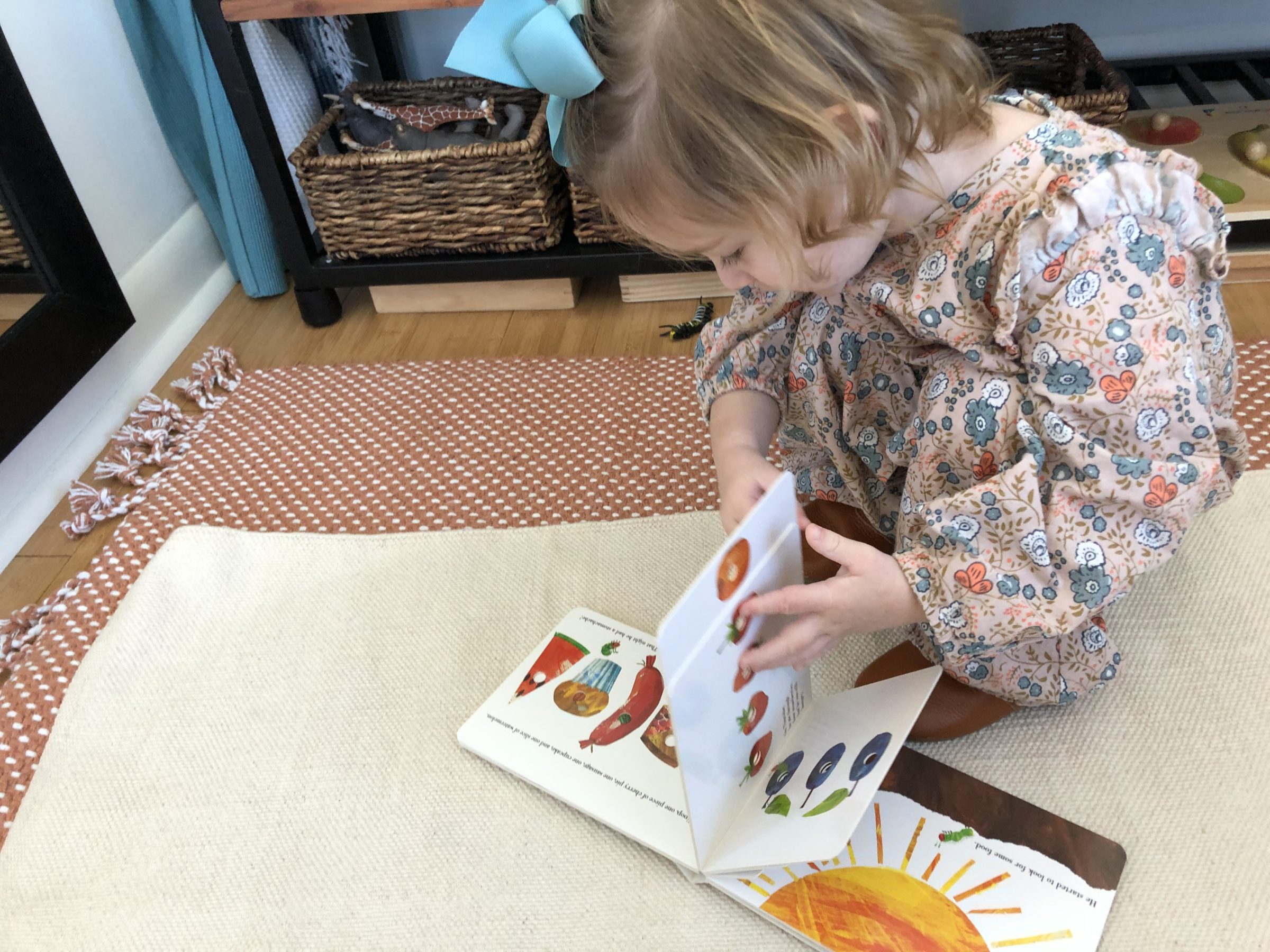Preparing for change takes thoughtful intention and planning. In his book, The Very Hungry Caterpillar, Eric Carle describes a caterpillar preparing for their significant change ahead: “On Saturday, he ate through one piece of chocolate cake, one ice-cream cone, one pickle, … and one slice of watermelon.” And, no surprise here, “That night he had a stomach ache.” 🐛🍫🍰🍦…
Too Much of a Good Thing
✨Carle’s story could easily inspire a book’s theme about a child’s innate urge to work, i.e., play and learn. Often, the child is offered an abundance of games and toys to “consume” in their play and learning spaces. It’s not uncommon to find brimming bins and baskets and numerous sensory-stimulating toy shelves. And when presented with so many choices, the child will likely explore each, even if only for a few minutes. But are these endless choices too much of a “good thing”?
The overflowing toy cabinets and storage closets often leave parents feeling anxious and overspent — in all ways! Having access to too much at once makes it difficult to enjoy or focus on an activity without being distracted by the possibilities of the next. As a result, children and parents feel these ‘stomach aches’ of sorts, too. Similarly, both the book and a lot of playrooms tell the story of more, more and more!
Less Really Can Be More
But, in a Montessori prepared environment, less really is more. Based on the adult’s observation of the child’s developmental needs and abilities, activities and materials are thoughtfully chosen to isolate specific learning. As examples, reading corners offer a few books that are reality based and relatable. Also, classroom surfaces are clean and curated with beautiful objects intended to inspire wonder. The editing of materials in the environment and mindful preparation of the adult will best serve the child.
Less 👉More:
Adult
• language 👉modeling
• interruptions 👉 observation
• judgement 👉 reflection
• complicated 👉 targeted learning
Child
• sitting 👉movement
• distraction 👉 concentration
• general 👉 specific
• dependency 👉 independence
Environment
• clutter 👉 engagement
• stimulation 👉 appreciation
• adult furnishings 👉 child-sized furnishings for independence
• restrictive 👉 respectful
Welcome Change
We know, much like the caterpillar, the child has an innate and ever-growing appetite for growth and change. However, it’s the adult who must thoughtfully guide, prepare and edit the child’s environment. And, when the child is offered appropriate ‘nourishment’, their best learning and development will be fueled and prepared for the change. 🐛🦋

